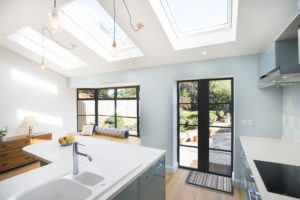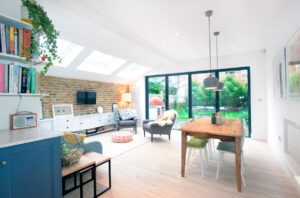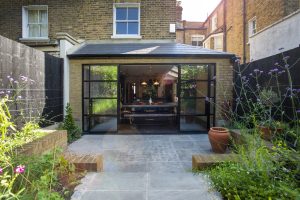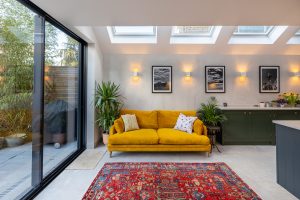As you embark on extending your living space, it’s important to recognise the significant role that lighting plays in creating a harmonious atmosphere and why it’s essential to incorporate lighting design into your plans from the outset.
One of the key elements we’ll explore in this article, is how lighting can create an ambience within your home extension. By carefully selecting fixtures and controlling light levels, you can set the mood and create a welcoming environment for different activities and occasions. In addition to creating ambience, functional lighting is essential for ensuring every area of your home extension serves its intended purpose.
Outdoor spaces also deserve attention when it comes to lighting design. We’ll explore the importance of outdoor lighting in enhancing the aesthetics and safety of your exterior. From highlighting architectural features to illuminating pathways and landscaping, we’ll share insights on creating an inviting and visually appealing outdoor environment.
Technology advancements have revolutionised how we control and customise our lighting from smart lighting systems, programmable settings, and energy efficiency. Finally, we’ll discuss the architectural considerations and design strategies that maximise the use of natural light in your home extension. Discover how to embrace natural light as a sustainable and aesthetically pleasing element that enhances the overall ambience and well-being of the space.
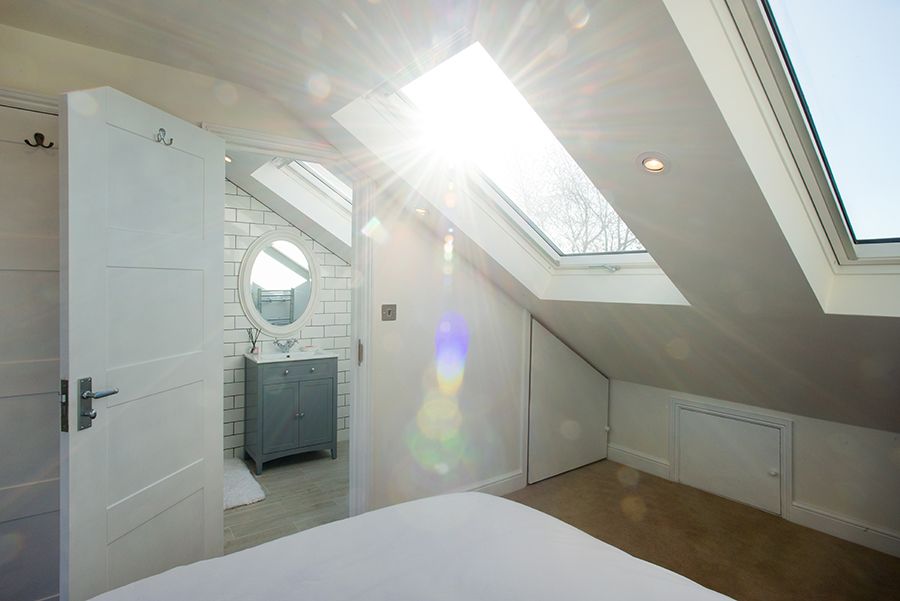
Ambience through Lighting
Layered lighting techniques involve using different lighting types to create depth and visual interest in your rooms. With a combination of overhead ambient lighting, task lighting for specific areas, and accent lighting to highlight decorative elements, you can create an ambience that reflects your style and achieve a balance that sets the mood.
Dimming capabilities offer unparalleled versatility in lighting design. The ability to adjust the intensity of lighting allows you to create various atmospheres within your extension, from bright and lively to cosy and intimate. The benefits of installing dimmer switches or using smart lighting systems allow you to effortlessly control and customise the brightness levels, providing the perfect lighting for any occasion.
Colour temperature refers to the perceived warmth or coolness of light. Different colour temperatures can evoke emotions and affect the overall ambience of your room. Understanding colour temperature can be a game-changer in setting the mood through lighting, whether it’s a warm, inviting glow for a relaxing evening or a cool, energising tone for a productive workspace.
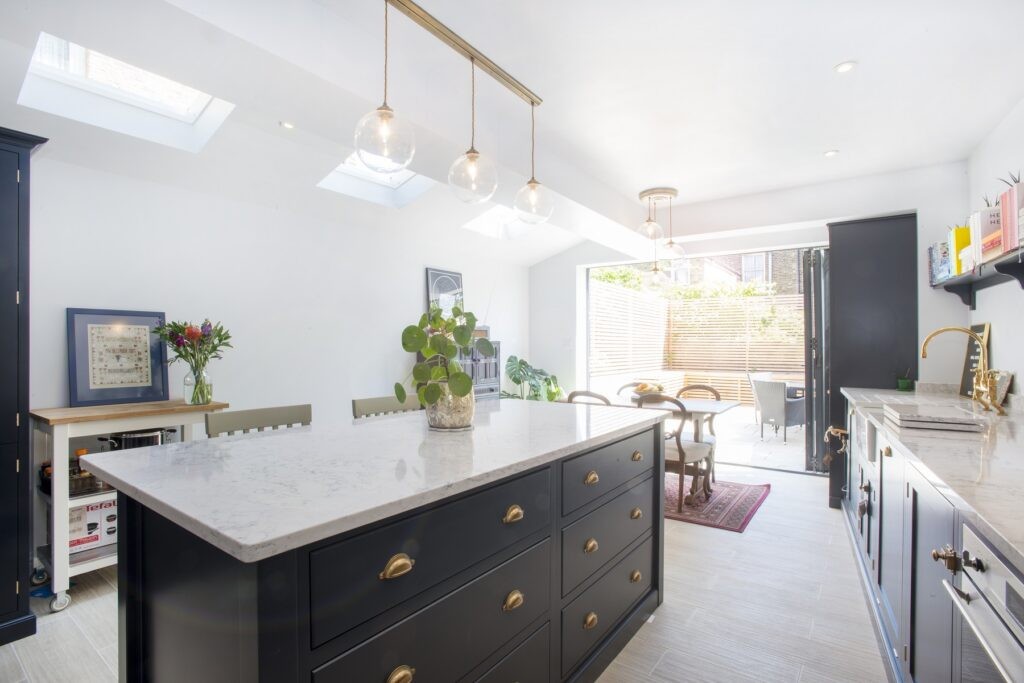
Accentuating Architectural Features
Spotlighting is a powerful technique that allows you to highlight specific architectural features or design elements in your home. Directing a focused beam of light will enable you to draw attention to intricate details, such as artwork, architectural features, or textured surfaces. The placement and positioning of spotlights can create dramatic effects and accentuate your home’s unique features.
Uplighting involves placing light fixtures at the base of architectural elements, such as columns, archways, or exposed beams, to cast light upward and create a sense of height and grandeur. Uplighting can transform your home by accentuating its vertical elements, adding drama and architectural interest. Properly implemented uplighting can make your home feel more spacious and showcase its unique structural features.
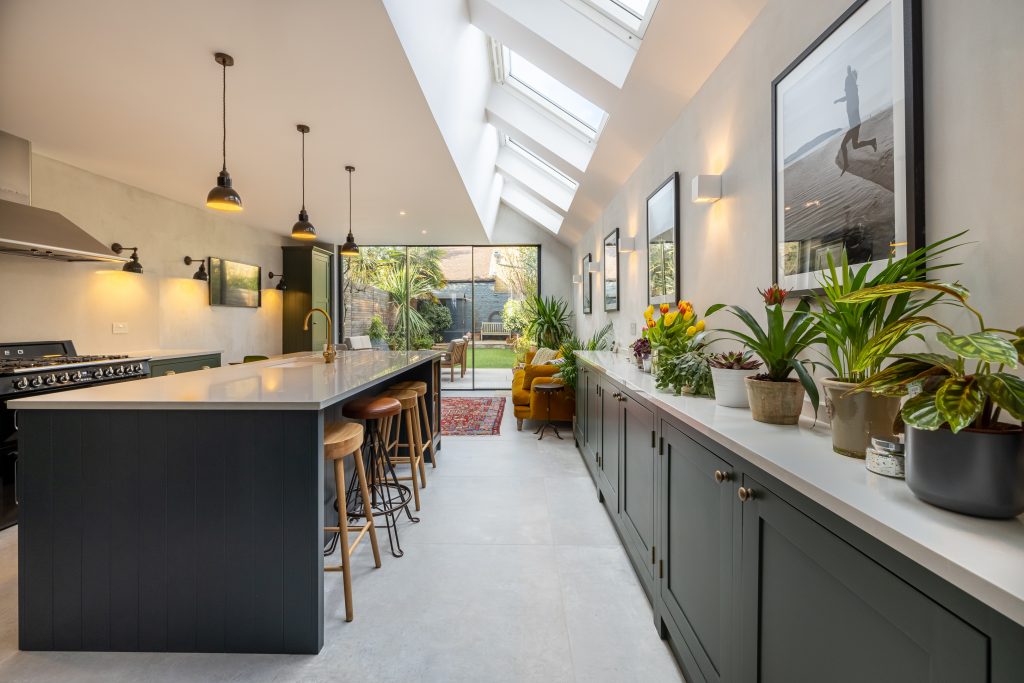
Functional Lighting for Everyday Activities
Task lighting is essential in areas where specific activities are performed, such as kitchens or home offices. Providing adequate task lighting to illuminate work surfaces, desks, or reading areas, will ensure optimal visibility and reduce eye strain. From under-cabinet lights in the kitchen to adjustable desk lamps in your home office, task lighting can enhance functionality.
In addition to task lighting, ambient lighting is essential for creating a welcoming and comfortable environment in your home. A balanced distribution of ambient light, such as overhead fixtures, wall sconces, or pendant lights, can provide general illumination throughout your home. By carefully selecting the right fixtures and considering factors like light output and colour temperature, you can create a cosy, inviting atmosphere that complements the overall design of your home.
Zoning involves dividing your home into different lighting areas or zones, each with its own controls and lighting sources. This approach allows you to customise the lighting in specific sections of your home according to different activities or preferences. It will enable you to create multiple atmospheres in the same space, save energy by lighting only the required areas, and cater to the individual needs of different users within your home.
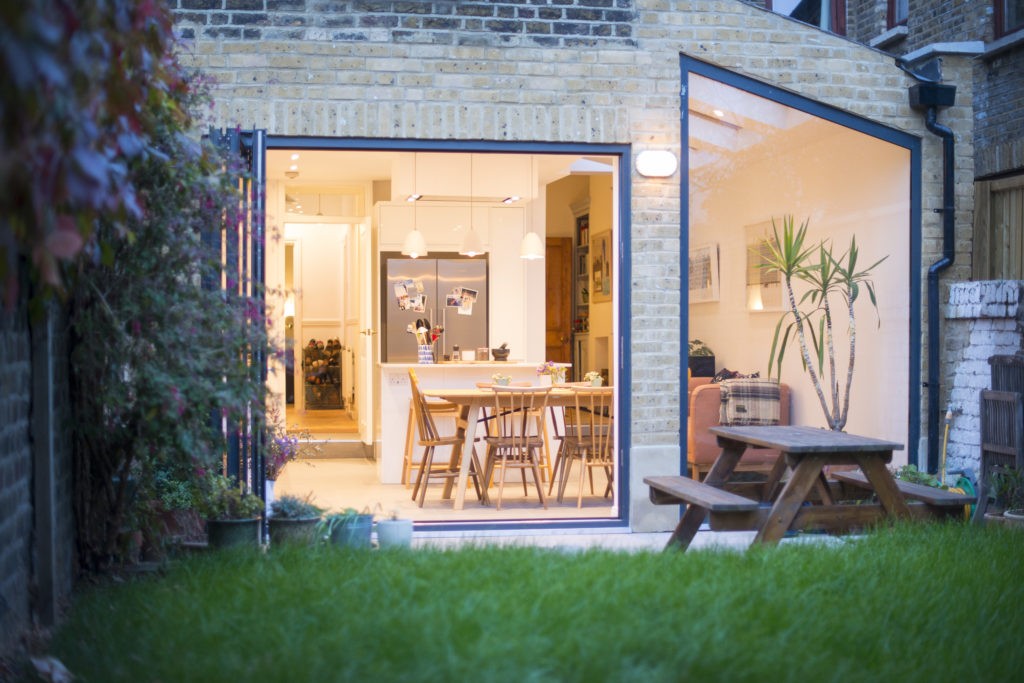
Outdoor Lighting Design
Pathway lighting is essential for safety and aesthetics in outdoor areas like patios or gardens. Illuminating pathways with solar-powered lights, low-voltage landscape lighting, or embedded lights guide guests while adding a touch of charm to your outdoor space. Properly designed pathway lighting enhances visibility and contributes to the overall ambience.
Accent lighting allows you to highlight specific elements in your outdoor landscaping, such as trees, shrubs, or architectural details. Using techniques like uplighting, downlighting, or silhouette lighting to accentuate the natural beauty can create a beautiful nighttime environment. Well-placed accent lighting can transform your outdoor living spaces and garden to extend the enjoyment of your area beyond daylight hours.
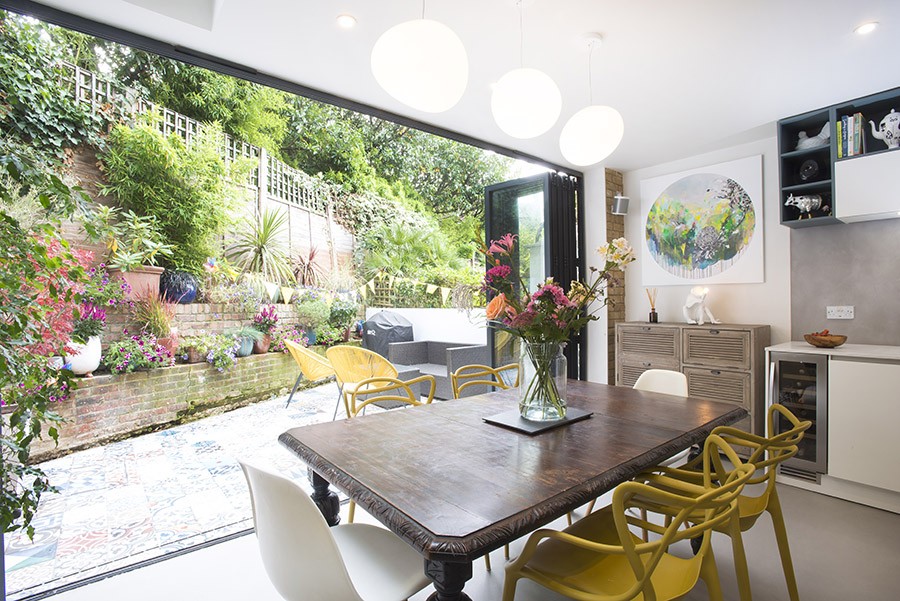
Smart Lighting Systems
With smart lighting systems, you can enjoy the convenience of programmable lighting. These systems allow you to set schedules and even automate lighting based on occupancy or natural light levels. Smart lighting also improves energy efficiency by automatically adjusting lighting levels and reducing unnecessary energy consumption, making it a sustainable and cost-effective choice for your extension.
Voice control is an increasingly popular feature in smart lighting systems. Integrating your home’s lighting with voice assistants like Alexa or Google Home enables hands-free control, allowing you to adjust light settings, activate scenes, or even change colours with simple voice commands.
Smart lighting systems offer endless possibilities for mood lighting and personalisation. You can explore the use of colour-changing LED lights, smartphone apps, or smart switches to tailor the lighting in your home to suit your mood. Whether creating a cosy ambience with warm, dimmed lighting or adding a splash of colour to showcase your style, smart lighting puts the power of expression at your fingertips, allowing you to truly make your home a reflection of who you are.
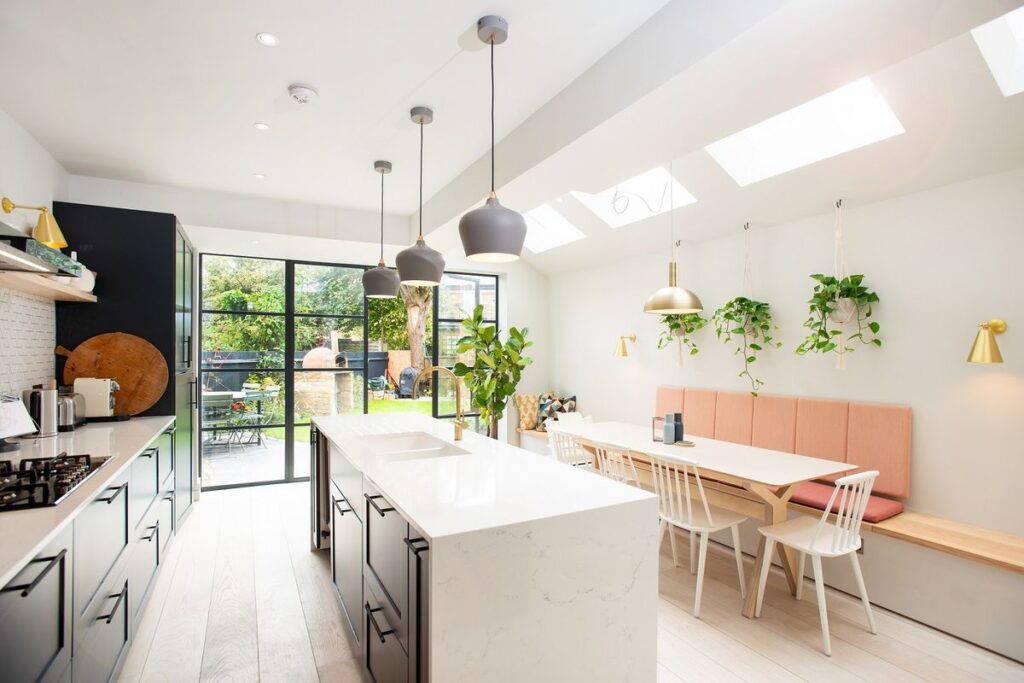
Maximising Natural Light
Strategic window placement and orientation are key factors in maximising the natural light in your home. The location and size of windows can optimise the capture of sunlight throughout the day, considering factors such as the sun’s path, nearby obstructions such as trees or buildings, and privacy considerations. By carefully considering these aspects, you can create a bright, inviting space that benefits from natural light.
Skylights and roof windows are excellent additions to extensions, as they introduce abundant natural light from above. Incorporating skylights increases daylight entering your home and improves ventilation. Glass doors and sliding panels offer an opportunity to integrate the outdoors with your extension while maximising natural light. Large glass doors can provide unobstructed views and allow daylight to flood the space. These elements also contribute to the flow, creating a harmonious transition between indoor and outdoor areas.


